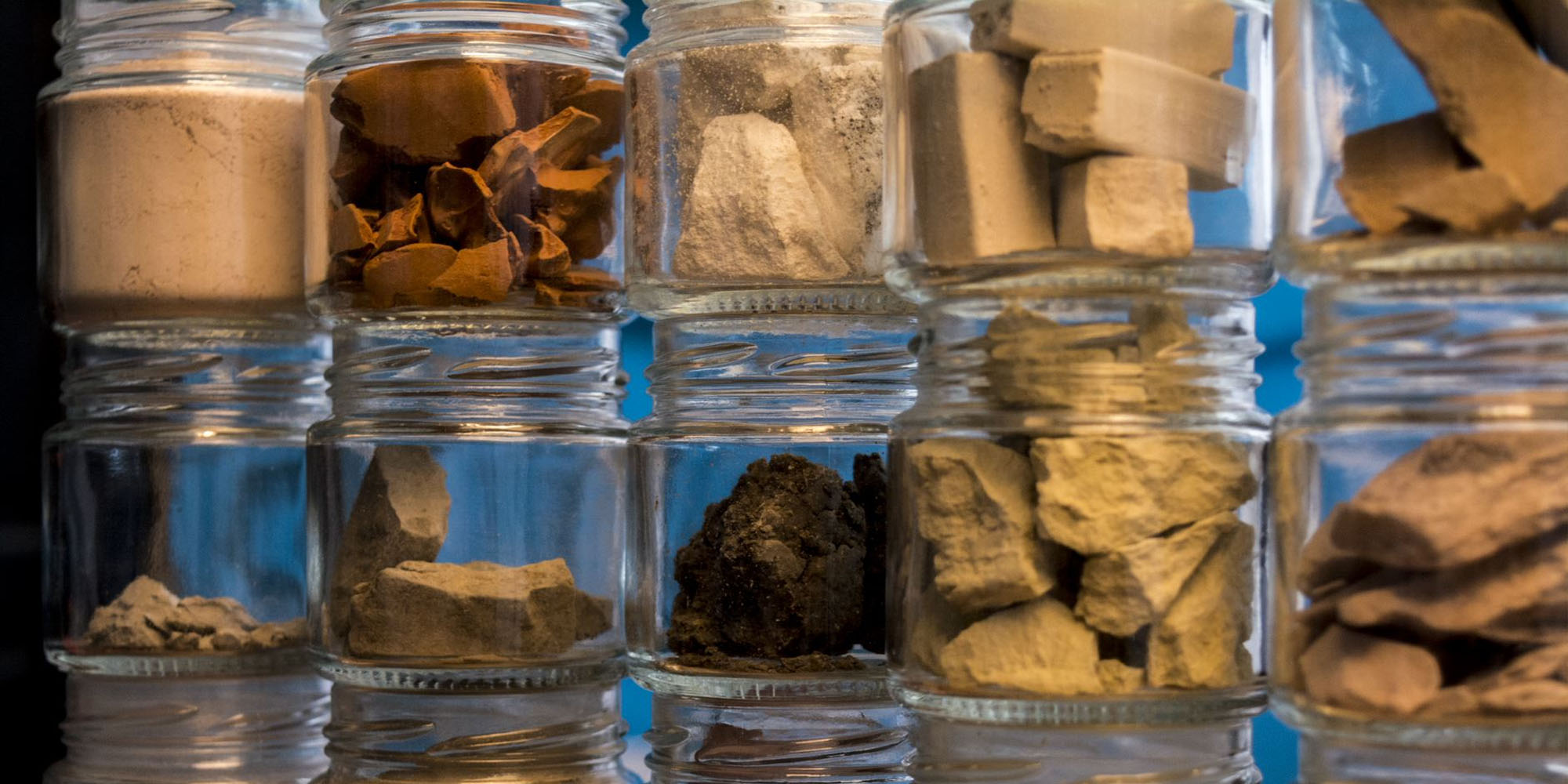The Museum of Edible Earth is a cross-disciplinary project with a core collection of earth samples which are eaten for various reasons by different people across the globe.
Geophagy is the scientific name for the practice of eating earth and earth-like substances such as clay and chalk. Eating earth is an ancient practice and is an integral part of many cultures all over the world. The Museum of Edible Earth is a cross-disciplinary project with a core collection of earth samples which are eaten for various reasons by different people across the globe. It invites the audience to physically question our relationship to the environment and the Earth and to review our knowledge about food and cultural traditions using creative thinking. The Museum of Edible Earth addresses the following questions: What stands behind earth-eating traditions? Where does the edible earth come from? What are the possible benefits and dangers of eating earth? What engagement are we as humans establishing with our environment and non-humans? The Museum of Edible Earth has more than 400 edible earth samples, mostly clay, such as kaolin and bentonite as well as chalk, limestone, volcanic rock, diatomaceous earth, and topsoil. The materials originate from 34 countries.
Eating earth is not recommended by food authorities and is at your own risk.
Project credits / Acknowledgements:
Founder: masharu
Project management (2020-2021): SasaHara
Photo and video (2021): masharu, Anna Zamanipoor, Luuk Van Veen, Jhalisa Rens
Graphic design (2021): Olga Ganzha, Jhalisa Rhens, Luuk Van Veen
Web design: Raphaël Pia, William Ageneau
Product design: Basse Stittgen
Support received from Creative Industries Fund NL
Tijl Fonds
Prins Bernhard Cultuurfonds
Netherlands Embassy in Russia
Mondriaan Fonds
Amsterdams Fonds Voor De Kunst
Het Wilhelmina E. Jansen Fonds
Support in kind has been received from: The World Soil Museum
